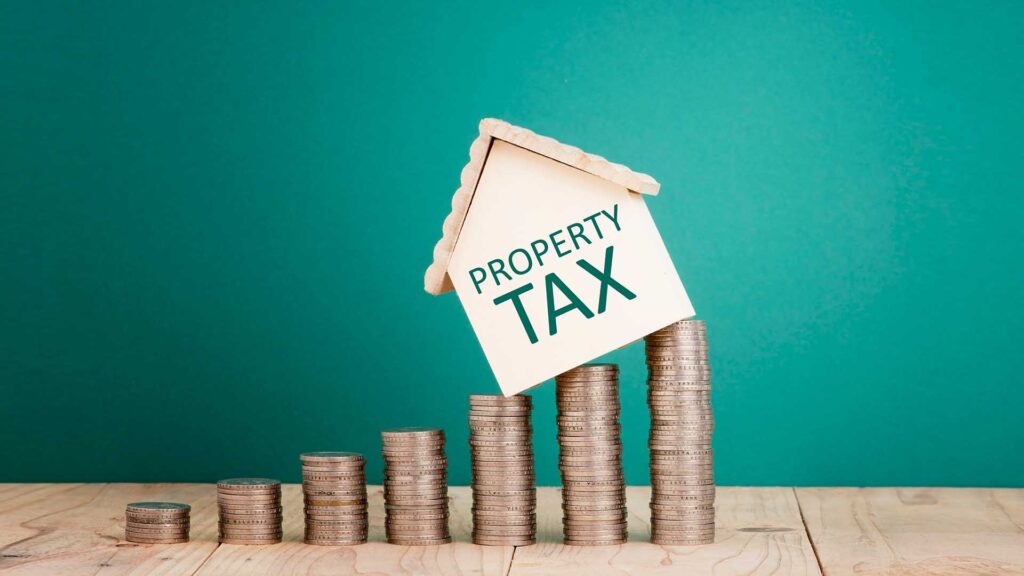Here is How to Avail Tax Benefits of Buying a Home
Believe it or not, there is an up-side on home loans, as a homebuyer can avail tax benefits of buying a home. The government may be charging tax on most things, but the good thing is that they also offer tax breaks as an incentive to homebuyers. These tax breaks help in reducing outgoing tax, making a way for better management of your cash flows.
Unknown to many, here are some tax deductions that you can claim when you take a home loan
Summary of Tax Benefits from Housing Loan
- Deductions on the Interest paid
You can claim a deduction for interest payable on a loan, taken for purchase, construction, repair, or renovation of any property, whether commercial or residential, under Section 24(b). This deduction on interest payment is available, for any residential or commercial property owned by you. It is also available whether the money is borrowed from a banking/housing company, or from your friends and relatives.
The deduction for interest can only be claimed from the year in which the possession is taken. So, for an under-construction property, the interest paid during the construction period cannot be claimed prior to its completion. It can be amortised and claimed in five equal instalments, beginning from the year in which the construction is completed and possession of the house is taken.
In case you have taken a home loan, then the interest component on the EMI that you pay each month is claimable as a tax deduction; but for a tax deduction to become applicable, you need to be both the owner of the property as well as the borrower of the loan against the property. However, do note that taxes can only be claimed provided you are using the property for personal use and not for passive income like renting.
Whatever interest you pay on your EMIs eventually become deductible from your annual earnings. If your EMI interest component is 1.8 lakhs/annum and your salary is 8 lakhs/year, then your annual taxable income becomes 8,00,000 – 1,80,000 = 6,20,00 lakhs/year. This shows there are benefits to taking home loans too!
Section 80C
- Under section 80C of the Income Tax Act, you can avail deduction on the principal amount paid towards your home loan. However, the tax benefit is only applicable after construction is complete.
- You can claim tax deduction under section 80C up to Rs.1.5 lakh. Under this section, you only get a tax break if the home loan you have taken is for the purchase or construction of a new property.
- To claim a full tax deduction under section 24, the property must be completed within 5 years. There is no such time restriction under section 80C.
- If you sell the property within a span of 5 years, the tax deduction will be reversed.
- Also, stamp duty charges as well as registration fees are exempt from taxation. This is regardless of whether you opt for a home loan or not.
Section 80 C deals with the principal amount deductions:
- For both self-occupied and let-out properties, you can claim up to Rs.1.5 lakh every year as a deduction.
- You also need to complete the construction of the property and only then claim the deduction.
- To claim this deduction, you should not sell your house within 5 years after possessing it.
- If you sell your house within 5 years after possession, any deduction claimed will be reversed in the year in which you sell it. This amount will also be added to your income for the year of sale.
- If you are a co-borrower and co-owner, you can each claim up to Rs.1.5 lakh as a principal reduction.
- You can also claim the stamp duties and registration fees paid for your property under this section.
Section 80EEA
A new section 80EEA is added to extend the tax benefits of buying a home on its housing loan interest taken for affordable housing during the period 1 April 2019 to 31 March 2020. The individual taxpayer should not be entitled to deduction under section 80EE.
Accordingly, a new Section 80EEA has been inserted to allow for an interest deduction from AY 2020-21 (FY 2019-20). The existing provisions of Section 80EE allow a deduction up to Rs 50,000 for interest paid by first-time homebuyers for loan sanctioned from a financial institution between 1 April 2016 and 31 March 2017.
With a view to further the benefit and give impetus to the real estate sector, the government has extended the benefit for the FY 2019-20. This deduction can be claimed until you have repaid the housing loan.

Features of Section 80EEA
a) Eligibility criteria
The deduction under this section is available only to individuals. This deduction is not available to any other taxpayer. Thus, if you are a HUF, AOP, Partnership firm, a company, or any other kind of taxpayer, you cannot claim any benefit under this section.
b) Amount of deduction
A deduction for interest payments up to Rs 1,50,000 is available under Section 80EEA. This deduction is over and above the deduction of Rs 2 lakh for interest payments available under Section 24 of the Income Tax Act. Therefore, taxpayers can claim a total deduction of Rs 3.5L for interest on a home loan, if they meet the conditions of section 80EEA.
c) Other conditions
Similar to Section 80EE, in order to claim deduction under Section 80EEA, you should not own any other house property on the date of the sanction of a loan.
Section 24
Homeowners can claim a deduction up to Rs 2 lakh on their home loan interest if the owner or his family resides in the house property. The same treatment applies when the house is vacant. If you have rented out the property, the entire home loan interest is allowed as a deduction.
However, your deduction on interest is limited to Rs. 30,000 instead of Rs 2 lakhs if both the following conditions stand satisfied:
- The loan is taken on or after 1 April 1999
- The purchase or construction is not completed within 5 years from the end of the FY in which loan was availed
Under Section 24, homeowners can claim a deduction for interest payments up to Rs 2 lakh on their home loan, if the owner or his family resides in the house property. The deduction of up to Rs 2 lakh applies even when the house is vacant. If you have rented out the property, the entire home loan interest is allowed as a deduction.
If you are able to satisfy the conditions of both Section 24 and Section 80EEA of the Income Tax Act, you can claim the benefits under both the sections. First, exhaust your deductible limit under Section 24, which is Rs 2 lakh. Then, go on to claim the additional benefits under Section 80EEA. Therefore, this deduction is in addition to the Rs 2 lakh limit allowed under Section 24.

1) Under Section 24 of the Income Tax Act, you can get a deduction on the interest paid for your home loan. However, there are some variations in the deduction that you can avail depending on the occupancy of the property and its completion
2) You can claim a tax break if the home loan finances purchase, construction, repair, renewal or reconstruction of a residential property.
3) If it is a self-occupied property that is completed within 5 years, the deduction limit is Rs.2 lakh. However, if after 5 years the property’s construction is not complete, the deduction limit drops to Rs.30,000.
4) If the property is not self-occupied, there is no limit on the deduction, before or after the completion of 5 years.
5) There are no restrictions on selling the property.
- Registration charges and Stamp duty
Aside from tax benefits on interest paid as well as on the principal amount, you can further avail of deductions on stamp duty and registration charges (which come down to a good sum!). The downside is that they can only be claimed in the year they were paid.
Stamp duty and registration charge Stamp duty and registration charges and other expenses related directly to the transfer are also allowed as a deduction under Section 80C, subject to a maximum deduction amount of Rs 1.5 lakh. Claim these expenses in the same year you make the payment on them.
- Deductions on repayment of the Principle amount
The tax laws not only allow you a deduction for interest but also to rebate for repayment of the principal amount under certain circumstances. As per provisions of Section 80C, an individual and a HUF can claim up to Rs 1.5 lakhs for repayment of principal of housing loan taken from specified institutions for residential house property.
The deduction is available with other eligible items like provident fund contribution, life insurance premium, tuition fees, PPF contribution, NSC, ELSS, for any amount paid for registration and stamp duty of a residential house.
The income tax laws do not have any restriction on the number of houses for which you can claim this deduction. The income tax laws also do not distinguish between self-occupied property or a let-out property, for this purpose. So, although, you can take home loans for more than one property, the aggregate amount of deduction shall be restricted to Rs 1.5 lakhs, for repayment of the principal amount of all the home loans taken together.
That part of your home loan EMI which makes up the principal amount is also eligible for tax claims under Section 80C of the Income Tax Act. However, only a total sum of 1.5 lakhs is claimable for tax deductions per year.
- Pre-construction Interests
You can claim pre-construction interests paid also once the construction is completed. This amount should, however, not exceed 2 lakhs and is only applicable if the said property is for personal use.
- When in wife’s name
To encourage financial security for women, additional tax breaks are being offered if a woman is an owner or joint owner of the property. Aside from the initial home loan getting cheaper when taken in a woman’s name, extra benefits up to 1.5 lakhs can be availed every year.
Tax Benefits on Home Loans for Joint Owners
If the housing loan is availed by two or more persons, each of them is eligible to claim a deduction on the interest paid up to Rs.2 lakh each. Tax can be deducted on the principal paid as well for an amount up to Rs.1.5 lakhs each. However, all the applicants should also be co-owners of the property in order to claim this deduction. Therefore, a joint home loan can give you greater tax benefits.
Tax Benefits for your Second Property
As per the current provisions, if you have more than one self-occupied property, then only one of them will be accepted as self-occupied. For the other property, you will have to pay tax on the basis of notional rent. You can choose either of your properties as the self-occupied one to maximize tax benefits.
As per the finance budget announced in February 2019, it was proposed that the second self-occupied home can also be claimed as a self-occupied one instead of it being deemed to be let out on rent. This will prevent the incidence of paying tax based on notional rent, helping the owner save money. It will also help you claim tax deductions for the second property as well.
Can HRA and Deduction Be Claimed on Tax Benefits?
Imagine a situation where you are staying in a house on rent and have also taken a home loan for your own property. In such cases, you can not only claim tax deductions on your loan but also claim House Rent Allowance (HRA) deductions on the rent you’re paying. However, note that you can claim this deduction only if you live in the house you’ve rented. You cannot make a claim even if your dependent family members are staying in it without you.
How to Claim Tax Benefits on Home Loans?
Claiming tax benefits on a home loan is a simple process. Below are the steps to claim your tax deduction.
Step1: Calculate the tax deduction to be claimed.
Step2: Ensure that the house is in your name or you are the co-borrower of the loan.
Step3: Submit your home loan interest certificate to your employer to adjust the tax deductible at source.
Step4: In case you don’t perform the above step, you would have to file the tax return by yourself.
Step5: In case you are self-employed, you are not required to submit these documents anywhere. Just keep them handy if in case the IT department raises queries in the future.
How to Calculate Tax Benefits on Home Loan?
The easiest way to calculate your tax benefits on a home loan is by using an online calculator. Simply enter your home loan details and click on calculate and a detailed tabulation will pop up. The details you will generally need are:
- Loan Amount
- Tenure
- Interest Rate
- Loan Start Date
- Gross Annual Income
- Existing Deduction Under 80C/D
Tax relief until June 2021
The government has announced tax relief that will help clear unsold inventory of residential units valued at up to Rs 2 crore. Buyers have been allowed to purchase homes at 20% below the circle rate without attracting any tax penalties.
Circle rate is the government-defined value at which property is registered, whereas agreement value is the one negotiated between the builder and the buyer. As prices of many unsold units have slumped below circle rates in many cities due to the economic downturn, market rates are much below the circle rates in these cities.
Not only may the fresh move allow developers to reduce the price of their units, but it could also lead to an increase in demand and faster absorption of the unsold inventory.
What does it mean?
Earlier, if the developer sold property below the circle rate, the differential between the circle rate and the agreed rate was taxable for both buyer and seller. Last year, the government allowed developers to sell at rates up to 10% lower than the circle rate without attracting additional tax. The government has now doubled the differential to 20%. This benefit will be available until June 30, 2021.
Generally, when the sale is executed below the circle rate, the government would consider the sale as being at the circle rate and would calculate profit and tax on that rate. Now that there will be no additional tax liability on developers for sales executed at up to 20% lower than the circle rate, this is expected to lead to developers passing on the benefit to homebuyers to attract them over the next seven months.
“Developers will now have the incentive in the form of this revised tax provision to pass on the benefit of lower market prices to buyers without incurring additional tax liability under the erstwhile provisions,” said Ramesh Nair, CEO and Country Head, JLL India.
Section 43CA of the Income-Tax Act states that “where the consideration received or accruing as a result of the transfer by an assessee of an asset (other than a capital asset), being land or building or both, is less than the value adopted or assessed or assessable by any authority of a State Government for the purpose of payment of stamp duty in respect of such transfer, the value so adopted or assessed or assessable shall, for the purposes of computing profits and gains from transfer of such asset, be deemed to be the full value of the consideration received or accruing as a result of such transfer.”
How will Homebuyers Benefit, and What should they do?
The biggest benefit is in the form of taxes — one can now buy at up to 20% lower than the circle rate without facing additional tax.
The move is expected to see a dip in real estate prices as developers may push sales to clear their inventory by reducing prices by up to 20% lower than the circle rate. In cases where developers don’t bring their prices down, homebuyers can negotiate for a reduction to a price up to 20% lower than the circle rate in their area. Homebuyers will also save on stamp duty as they would be able to register their housing unit at a lower price.
Since these benefits are available till June 2021, homebuyers who are looking for their first house and are not facing a severe financial constraint can go for their purchase. Since interest rates are low and likely to remain so in the near future, they will also see a lower outgo on their EMIs.

This section deals with the yearly deductions related to the interest you pay on your property loan. The relevant details are given below:
- If your property is a self-occupied one, you can claim a maximum deduction of Rs.2 lakh.
- If you let your property out on rent, you can claim any amount you’ve actually paid as interest. There is no limit.
- If you’re a co-borrower and also co-owner of the house, you can each claim up to the maximum deductible amount under this section.
- The Rs.2 lakh deduction applies only if you complete the property (for construction) within 5 years. If the construction is not completed within this period, you can claim only up to Rs.30,000.
- If the property is given on rent, you can claim any amount actually spent as interest, whether it is completed or not.
Capital Gains Tax (CGT)
- Definition
Capital gain can be defined as any profit that is received through the sale of a capital asset. The profit that is received falls under the income category. Therefore, a tax needs to be paid on the income that is received. The tax that is paid is called capital gains tax and it can either be long term or short term. The tax that is levied on the long-term and short-term gains start from 10% and 15%, respectively.
- Types: Long-term and short-term
Long-term capital assets are considered as an asset which is held by the taxpayers for a time period of more than 36 months before the transfer. Debt-oriented mutual funds, jewellery, etc., that are held for a duration of more than 36 months will come under this category and there is no 24-month reduction period under such circumstances.
In case assets are held for a duration of 36 months or less, it can be defined as a short term capital asset. However, for immovable assets such as house property, building, and land, the duration has been reduced from 36 months to 24 months.
Therefore, if an individual wish to sell land or house after holding it for a duration of 24 months, the profit that the individual makes from it comes under long term capital gain.
In case the property has been inherited or given as a gift, the amount of time the property was held by the previous owner is also considered when determining whether the property can be considered as a short-term capital asset or a long-term capital asset.
The date on which the bonus shares were allotted is considered when determining the category under which bonus shares or right shares fall.
Calculation CGT
Depending on the amount of time that the asset has been held, the calculation of Capital Gains will vary.
Calculate Long Term Capital Gains
The procedure to calculate long term Capital Gains is mentioned below:
- First, the individual must consider the full value of the asset.
- Next, the individual must make the below-mentioned deductions:
- The costs that have been incurred due to the transfer.
- The amount of money that is spent on the acquisition.
- The amount of money that is spent on improvement.
- From the number that has been calculated by following the above steps, the individual must subtract any exemptions that are provided under Section 54B, Section 54F, Section 54EC, and Section 54.
Given below is an example to calculate long term Capital Gains:
Assumptions:
- Price house was purchased for Rs.30 lakh
- Financial Year house was purchased: 2010-2011
- Financial Year house was sold: 2018-2019
- Amount house was sold for Rs.50.5 lakh
- Inflation-adjusted cost: (280/167) x 30 = 50.29 lakh
- long term Capital Gains: 50.50 lakh – 50.29 lakh = Rs.21,000 (approx)
Calculate Short Term Capital Gains
The below-mentioned procedure must be followed by individuals in order to calculate short term capital gains:
- First, the individual must consider the full value of the property.
- Next, the below-mentioned points must be deducted:
- Expenses that have been incurred for the improvement of the property.
- The expenses incurred for acquiring the property.
- Any expenses that have been incurred for the transfer of the property.
- The amount that is calculated after the deduction is the short term capital gain.
- The formula for the calculation of short term capital gain is the full value consideration minus the expenses that have incurred for the transfer minus the cost for improving and acquiring the property.
Given below is an example of how short term Capital Gains is calculated:
Assumptions:
- Price the house was sold for: Rs.55 lakh
- Expenses for brokerage, commissions etc: Rs.30,000
- Net sale consideration: Rs.54,70,000
- Price the house was bought for: Rs.35 lakh
- Amount spent for the improvement of the house: Rs.3 lakh
- Gross short term Capital Gain: Rs.16,70,000
- Tax exemptions under Sections 54, 54B, 54D, 54EC, 54ED, 54F, 54G: Nil
- Net short term Capital Gain: Rs.16,70,000
- Short Term Capital Gains: 30% of Rs.16,70,000: Rs.5,01.000
Capital Gain Tax on Property
Capital gain tax is chargeable on the profit earned from the selling of house property, however, the tax is not charged on the entire amount itself. In case, a person sells the property in the time period of three years then it will be taxed directly according to the income tax slab the person falls under and will be termed as a short-term capital gain. Short-term capital gain attracts a flat 20% tax.
The advance that is paid for the sale of the house property is taxed and it is later fortified by the person for sale of flat in case the transaction does not go through.
Under the head of ‘income from other sources,’ the advance amount that is paid is taxed in the same year. At the time of determining the capital gains, the advance amount can be reduced from the acquisition cost of the asset in the year the capital asset is sold.
An individual can build or purchase a house from the capital gains in the time period of 2 years from selling the house property. Moreover, the individual can book a flat and save on taxes with the capital gain. Besides this, the individual can also avail tax benefits by investing the capital gains in banks.
However, capital gain tax on the property offers tax exemption, it is important to keep in mind that with one sale of property one can invest only in one new asset and cannot do an investment in multiple assets to minimize the tax. In case, a person is selling more than one property then they can invest the accumulative capital gain amount on only one new property.


